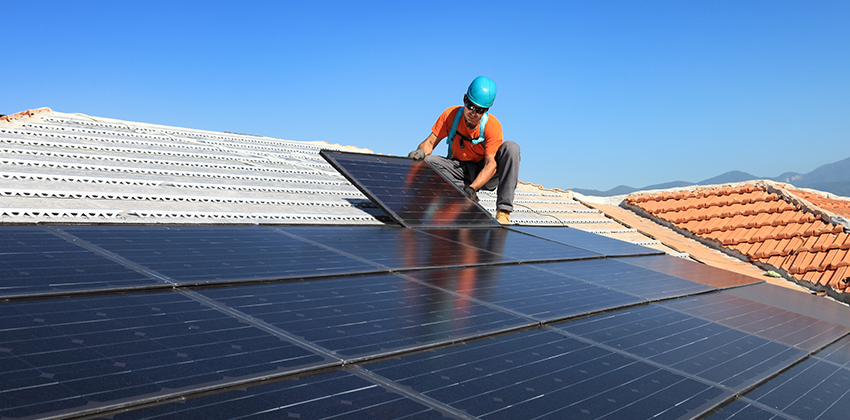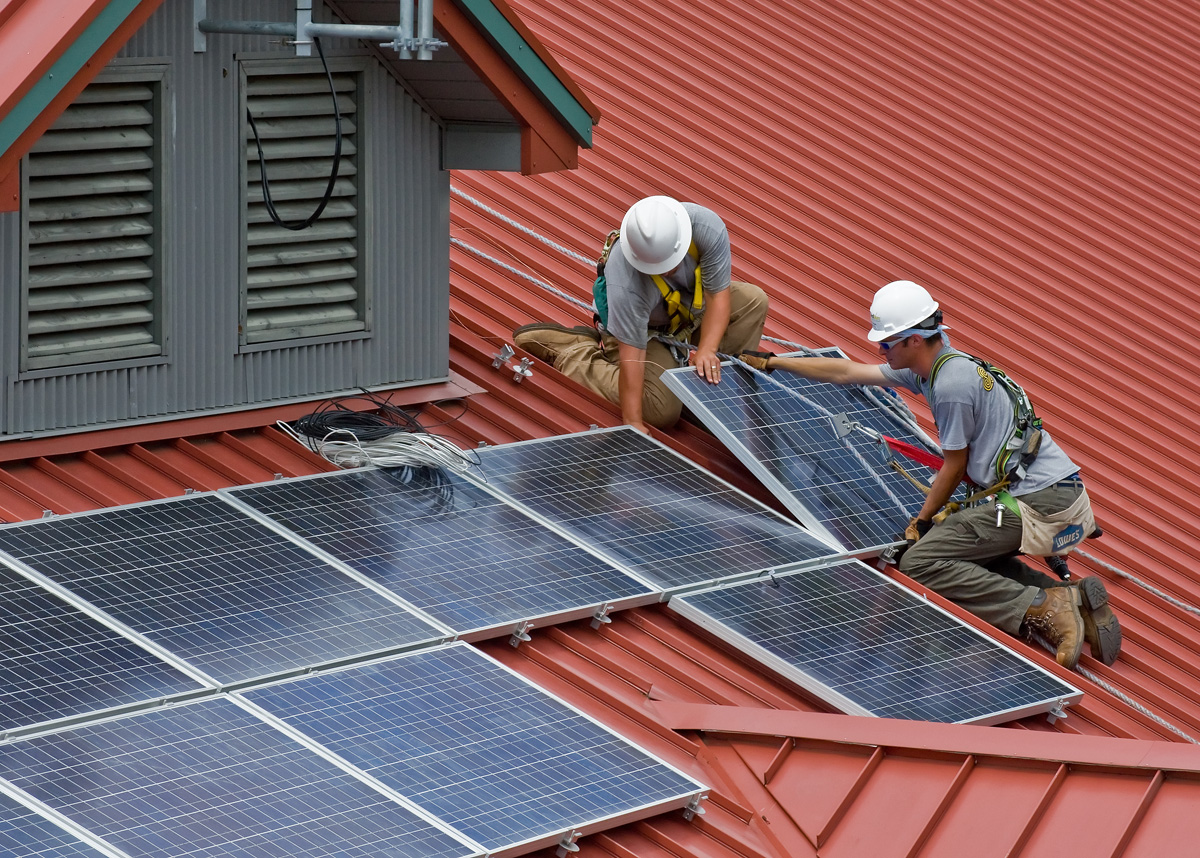Solar Energy System: Tips to Select the Right Solar Panels for Your Home with Lumina Solar
Solar Electric Panels: Large-Scale Photovoltaic Systems Can Significantly Minimize Energy Costs For Businesses
Opening the Benefits of Industrial Solar Panels

Have you ever wondered why more companies are turning towards commercial photovoltaic panels in their energy technique? It's not almost going green-- though that's an engaging reason-- it has to do with harnessing an abundant, totally free resource that can drastically minimize functional costs over time. Envision a factory roofing system changed into a peaceful, powerful energy generator, calmly slicing month-to-month electrical energy expenses while lowering carbon footprints.
Financial Advantages That Speak Volumes
Business photovoltaic panels use a suite of monetary advantages that can improve a company's bottom line. Think about these bottom lines:
- Lowered Energy Expenses: Solar energy can balance out a considerable portion of electrical energy usage, resulting in immediate cost savings.
- Roi (ROI): Though initial installation can be considerable, the long-lasting cost savings typically go beyond the in advance costs.
- Energy Price Stability: Unlike nonrenewable fuel sources, solar power isn't based on market volatility.
- Increased Residential Or Commercial Property Worth: Structures equipped with planetary systems tend to assess greater in worth.
Ecological Effect: More Than Simply a Buzzword
Consider the last time you saw a field of photovoltaic panels gleaming under the sun. It's a sight that represents hope and duty. Commercial solar panels drastically lower greenhouse gas emissions, assisting companies align with sustainability objectives without sacrificing productivity.
- Lower carbon footprint
- Reduction in reliance on nonrenewable energy
- Assistance for business social responsibility efforts
Operational Benefits That Frequently Go Unnoticed
Beyond the obvious financial and ecological perks, industrial solar panels provide functional benefits that lots of ignore. For instance, solar setups can supply energy self-reliance, minimizing vulnerability to power failures or utility rate hikes. This durability can be a game-changer throughout peak need periods or emergency situations.
| Benefit | Explanation |
|---|---|
| Energy Reliability | Guarantees a consistent power supply, decreasing downtime. |
| Low Upkeep | Commercial solar technology needs very little upkeep. |
| Scalability | Systems can broaden as energy needs grow. |
What's the Catch?

Is there a drawback? Some might argue the in advance financial investment or area requirements. However if you peer beyond the surface, the long-lasting benefits frequently eclipse these challenges. Consider it: in a world where energy costs unexpectedly vary, wouldn't you want a steady, sustainable source? The answer might be clearer than you believe.
Eventually, business solar panels don't just power buildings-- they empower services to picture a future where earnings and planet coexist harmoniously. Could this be the energy revolution your service has been waiting for?
Setup Process and Factors To Consider
Imagine standing atop a business roof, the sun blazing overhead, panels shining like shards of a futuristic mosaic. The setup procedure for industrial solar panels is far from an easy rooftop decoration-- it's an intricate symphony of engineering, precision, and foresight. One misjudgment in the installing angle or electrical wiring layout can ripple into months of lost effectiveness and pricey repairs.
Secret Steps in Setup
- Site Evaluation: Before the first panel touches metal, a comprehensive assessment of the website's sun exposure, roofing system structure, and shading patterns is important. Does the roof slope favor ideal solar gain? Are neighboring trees or buildings casting unforeseeable shadows?
- System Design: Tailoring the panel design to the company's energy needs and roof constraints includes advanced modeling tools. This is where theoretical energy output meets physical reality.
- Structural Support: Commercial roofs typically need support to bear the weight and wind loads of the solar range. Not accounting for this can cause drooping or disastrous failure throughout storms.
- Electrical Integration: Connecting the panels to the building's electrical system demands expert understanding of load balancing and inverter positioning to lessen energy loss.
- Last Evaluation and Testing: The last step ensures everything operates perfectly, however it's also when concealed defects typically emerge.
Crucial Considerations for Success
- Roofing System Condition and Durability: Are you setting up on a roofing system that will last another 20 years? It's smart to change or fix the roofing ahead of time to avoid getting rid of panels prematurely.
- Weight Circulation: Not all roofs are produced equal. Understanding the load-bearing capability avoids structural damage and preserves safety.
- Orientation and Tilt Optimization: Even a slight deviation from the ideal panel angle can slash output by up to 15%. Accuracy here pays dividends.
- Weather Patterns: How will local climate extremes-- hail, snow, or high winds-- impact the durability and efficiency of your system?
- Electrical wiring Pathways: Planning circuitry routes to minimize voltage drop and avoid electromagnetic disturbance is an often overlooked yet essential factor.
Expert Tips for a Perfect Setup
| Idea | Why It Matters |
|---|---|
| Perform a shadow analysis at different times of day and year | Makes sure maximum sunshine capture and prevents unforeseen dips in energy production |
| Usage micro-inverters rather of a single central inverter | Increases system strength; one panel's underperformance will not drag down the whole range |
| Engage a structural engineer early in the process | Avoids expensive surprises associated with roofing stability and compliance |
| Label all electrical components plainly | Accelerate fixing and future upgrades |
Have you ever questioned why some solar installations seem to defy the components for decades, while others falter after a few seasons? It's the hidden attention to information-- like verifying torque settings on mounting hardware or calibrating inverter settings to regional grid conditions-- that separates the extraordinary from the average. Commercial photovoltaic panel installation is less about slapping panels on a roofing system and more about crafting a resilient, efficient energy environment customized to the special pulse of each organization.
Exploring the Ranges of Commercial Solar Panels
Think of strolling into a huge field of photovoltaic panels, each gleaming under the sun with an unique function. Industrial solar panels aren't a one-size-fits-all service. They are available in various flavors, each tailored to various energy requirements and installation environments. Ever questioned why some panels appear bulkier while others appear sleek and slim? Let's peel back the layers.
Monocrystalline Solar Panels: The Elegance of Efficiency
These panels, crafted from a single crystal of silicon, look like a dark, almost black canvas extended throughout roofs and solar farms. Their consistent appearance isn't simply visual-- it equates to higher performance rates, frequently hovering around 20% or more. This indicates they convert a bigger portion of sunshine into electrical power, making them ideal for spaces where every square inch matters.
However, their production is energy-intensive, akin to molding a diamond from rough stone. For businesses with restricted roof space but high energy usage, monocrystalline panels frequently end up being the go-to option.
Polycrystalline Solar Panels: The Mosaic of Affordability
Photo a mosaic, vibrant and speckled with numerous shades of blue. Polycrystalline panels are made from melted silicon pieces put into molds, leading to a somewhat rough, less uniform appearance. They typically offer somewhat lower performance-- around 15-17%-- however their manufacturing process is less inefficient and more economical.
When budget plan restrictions loom big, and space is less of a premium, these panels strike a fine balance in between upfront investment and performance.
Thin-Film Solar Panels: The Light-weight Contenders
Ever seen photovoltaic panels that resemble versatile sheets instead of stiff panels? Thin-film innovation deposits photovoltaic product onto substrates like glass or metal, developing lightweight, bendable panels. While their efficiency lags behind crystalline types-- often listed below 15%-- they excel in unique applications where traditional panels falter.
Envision rooftops with uncommon shapes or big facade setups where weight and versatility determine options. Thin-film panels shine here, although they need more surface location and careful consideration of long-term output degradation.
Secret Considerations for Industrial Installations
- Energy output per square foot: Important for taking full advantage of power in constrained areas.
- Toughness: Panels sustain weather condition extremes; material composition impacts lifespan.
- Temperature coefficient: Essential in hot climates as some panels lose effectiveness when temperature levels rise.
- Setup intricacy: Thin-film panels can decrease structural load but might make complex wiring.
Expert Tips for Selecting the Right Panel Type
- Examine your roofing's load-bearing capacity before going with much heavier monocrystalline arrays.
- Think about the angle and orientation of your installation site; some panels carry out better under diffuse light.
- Look beyond efficiency numbers-- consider degradation rates and service warranty terms.
- Participate in early discussion with engineers about possible shading problems that can dramatically reduce output.
In the quest for the best business solar panel, the devil is truly in the details. Are you prepared to harness the sun's power with accuracy rather than guesswork?
Ecological Impact and Energy Savings of Commercial Solar Panels
Envision a huge rooftop, when Solar System For Home a barren stretch of asphalt, now shining with rows of business solar panels. This change isn't simply visual; it's an effective declaration versus the ruthless intake of fossil fuels. Business solar selections can slash carbon footprints in ways that might shock even skilled energy analysts. What does that actually mean for the environment and your bottom line?
Carbon Footprint Decrease: Beyond the Numbers
Every kilowatt-hour produced by solar panels represents a tiny success against greenhouse gas emissions. On a bigger scale, an industrial center geared up with solar can minimize CO2 emissions by heaps each year-- equivalent to planting hundreds of trees. The real effect extends beyond mere statistics. Think about the ripple result: less emissions indicate cleaner air, healthier neighborhoods, and a more steady environment.
Energy Performance: The Quiet Game-Changer
Performance in solar innovation has jumped forward, however even the most sophisticated panels face ecological obstacles during production. What typically escapes attention is how savvy system style can reduce these issues, maximizing energy output while lessening ecological disturbance. Orienting panels with accuracy and including energy storage services can change variable sunshine into steady power, cutting dependence on grid electricity.
Expert Tips for Maximizing Energy Savings
- Enhance tilt and orientation: Even a couple of degrees can affect efficiency by approximately 15%.
- Incorporate clever inverters: They enhance grid compatibility and minimize energy losses.
- Utilize energy management systems: Real-time monitoring recognizes inefficiencies before they intensify.
- Scale slowly: Phased installations enable adaptation to progressing energy demands without squandering resources.
Environmental Compromises and Long-Term Vision
Solar panels don't spring from thin air; their production includes uncommon minerals and energy-intensive processes. This truth pushes stakeholders to believe beyond immediate gains. What if end-of-life recycling for panels were structured industry-wide? The capacity for circular economy principles to reshape the solar sector is tremendous, promising even greater environmental dividends in the future.
Quantifying Effect: A Quick Reference Table
| Metric | Typical Yearly Commercial Solar Output | Equivalent Environmental Advantage |
|---|---|---|
| Energy Produced (kWh) | 500,000 | Powering ~ 45 typical homes for a year |
| CO2 Emissions Prevented (tons) | 350 | Planting ~ 300 fully grown trees |
| Energy Cost Cost Savings | ~$ 40,000 | Reinvestment into sustainable operations |
So, when weighing the environmental impact of commercial photovoltaic panels, ask yourself: are you prepared to envision energy not simply as an utility, but as a driver for ecological renewal? The answer forms how companies harness the sun's power today-- and tomorrow.